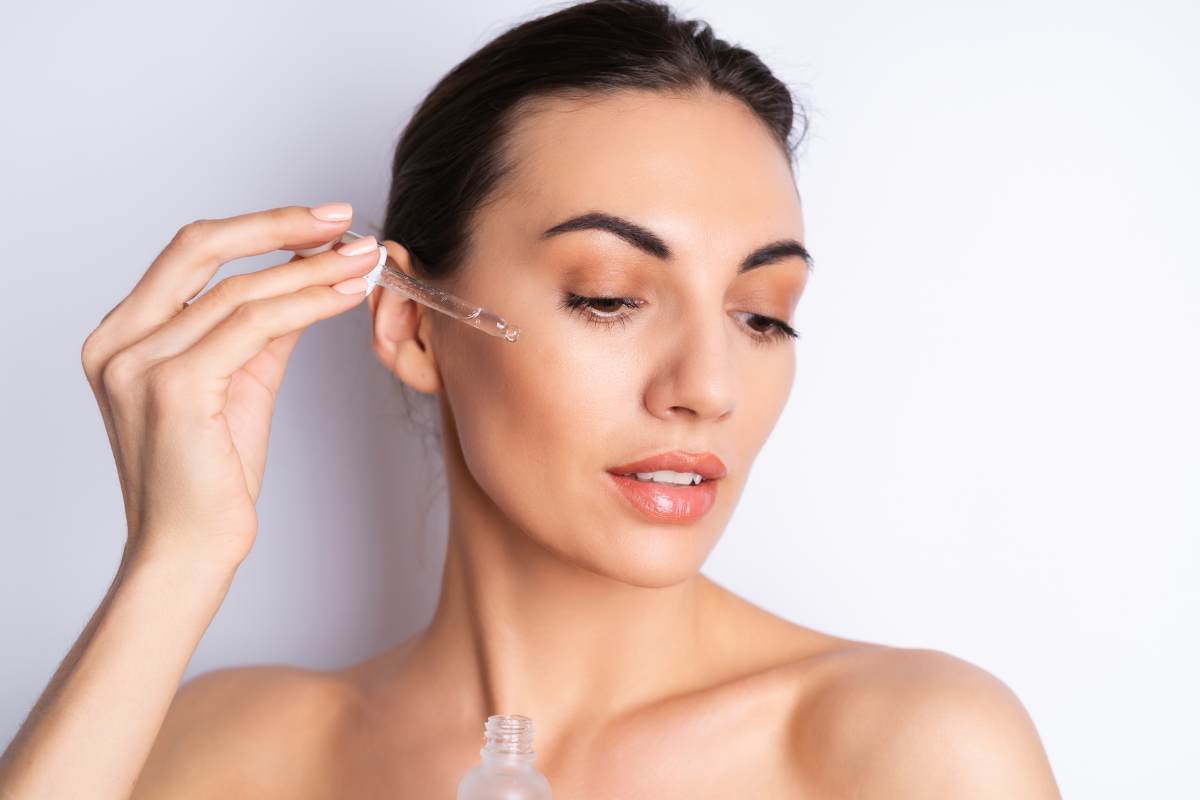Ever heard about the magic of hyaluronic acid? At one point, people started calling it the fountain of youth; and for a good reason. This substance has a remarkable ability to hydrate the skin. It could hold the key to dewy, supple, and revitalized skin. But, what is hyaluronic acid exactly, and what makes it so unique? The guide below can show you the ropes.
What Is Hyaluronic Acid?
Before we take a look at its impact, it’s important to understand what is hyaluronic acid. Hyaluronic acid (HA) is a clear, slippery, and gooey substance that the body creates on its own. It works like a lubricant and cushion in the tissues and joints, explains WebMD.
You can find HA in everything, from sheet masks to hyaluronic acid serum, injectables, face creams, eye drops, and dietary supplements. According to Harvard experts, HA is an extremely powerful humectant. This substance can draw and hold water. In fact, it can bind more than 1,000 times its weight in water.
How Does Hyaluronic Acid Work?
As we age, the production of collagen and hyaluronic acid in our skin begins to decrease. When the skin loses its firmness and stretchiness, wrinkles start to form, research shows.
So, what does hyaluronic acid do? This substance acts as a magnet for moisture by helping the cells hold onto as much of it as they can. This makes the complexion feel and look soft, moist, and plump.
Because it is so versatile, lots of cosmetics and prescription therapies have it as their primary ingredient. People use it for:
- Anti aging
- Skin hydration
- Maintaining normal mobility
- Sun damage
- Hyperpigmentation
- Vaginal dryness

What Are Hyaluronic Acid Benefits
When you are looking for that full skin-plumping routine, hyaluronic acid should be at the top of your list. This substance has a lot to offer, from boosting the skin’s self-smoothing ability to reducing the pores. Here is a quick look at some of the hyaluronic acid benefits.
- Moisturizes the skin - Based on a study from Wiley Dermatologic Therapy, the main advantage of HA is skin hydration. Because of its great ability to absorb water, hyaluronic acid can moisturize both the outer layer of the skin (stratum corneum) and the layer beneath it (dermis).
- Rejuvenates the skin - Want to know what is hyaluronic acid good for? HA alone or when combined with other substances can be particularly helpful for improving face rejuvenation, skin tightness, and elasticity. It supplies natural benefits by replenishing moisture in the skin, research indicates.
- Provides antioxidant properties - Several studies show that HA has antioxidant compounds. This makes it a potent anti aging ingredient.
- Makes fine lines less visible - HA’s water-holding ability results in radiant, smoother, and softer skin. This level of hydration can improve deep fine lines and slow down wrinkle formation.
- Minimizes the size of enlarged pores - Hyaluronic acid serum firms the skin and reduces pores. It causes them to gradually shrink and become less prominent.
-
Repairs photodamaged skin - You may be asking yourself, does hyaluronic acid work? Applying HA every day can calm the inflammation caused by regular sun exposure.
Different Types of Hyaluronic Acid Explained
Skincare products use various types of HA. Due to their distinct forms and structures, they offer a wide range of hyaluronic acid benefits.
Some penetrate more effectively, some provide longer-lasting hydration, and others offer increased stability. Which one you would use depends on your specific needs, skin type, and the desired effect. To understand what is hyaluronic acid, you need a better perspective of its distinct types.
- Hyaluronic Acid (INCI: Hyaluronic Acid): This is the standard form of hyaluronic acid. It typically has a larger molecular weight (> 1,800kDa). Wondering what is hyaluronic acid good for? It stays on the outer layer of the skin and forms a shield that stops water from evaporating.
- Hydrolyzed Hyaluronic Acid (INCI: Hydrolyzed Hyaluronic Acid): This type has a smaller molecular weight (> 1,000 to 1,800kDa). This allows it to penetrate deeper into the skin, providing more effective hydration.
- Sodium Hyaluronate (INCI: Sodium Hyaluronate): This is the alkaline form of HA. It has a much lower molecular weight than standard HA (> 100 to 1000kDa). This gives it superior penetrating abilities and more effective hydration. It can visibly reduce wrinkles and make the skin look rejuvenated.
- Sodium Hyaluronate Crosspolymer (INCI: Sodium Hyaluronate Crosspolymer): This form is the latest addition to the skincare market. It provides the same stability of hyaluronic acid salts paired with the superior moisturizing abilities of hyaluronic acids with higher molecular weight.
- Sodium Acetylated Hyaluronate (INCI: Sodium Acetylated Hyaluronate): This form is another relatively new option. It has been chemically modified to provide both hydrophilic and lipophilic compounds. It can work well with the skin and gets absorbed easily.
There is also another variant worth noting: Hyaluronic Acid Oligomer. This particular form, with its lower molecular weight, penetrates the skin more effectively. It can promote deep hydration and enhance the skin's rejuvenation process. It can increase the HA content in the skin and help the skin from within. This characteristic significantly sets SilkiMED apart from other entities in the cosmetic sphere.
Hyaluronic Acid Side Effects
Overall, topical products, supplements, and injectables seem to be relatively safe if used as directed.
But, it is possible to develop some hyaluronic acid side effects. It is best to apply the product on a small area and test how your skin reacts to it.
Those who take HA injectables might experience the following side effects:
- Bruising
- Itching
- Redness
- Pain
- Swelling
The adverse reactions should subside in a week. Avoid using the product if you are pregnant, breastfeeding, on radiation therapy, or have scleroderma.
How to Use Hyaluronic Acid?
To know how to use hyaluronic acid, check the product label.
If you are using a moisturizer infused with hyaluronic acid for face, follow your usual skincare routine and apply the moisturizing lotion at the end.
If you prefer hyaluronic acid serum, wash the face first with a toner and/or cleaner. Then apply a few drops of the serum. Rub it in the damp skin.
Apply the serum or lotion two times a day.
If you want to use it orally, you can get a liquid form of HA, which you can mix in water.
How Much Hyaluronic Acid Dosage Should I Apply?
How much hyaluronic acid should I use? This is a common dilemma for many users.
The average dose for oral supplements is 120 mg capsule a day, for 12 weeks. Most supplements are in the 100 mg to 200 mg range.
For curbing osteoarthritis, patients usually get a series of injections (3 to 5 shots), on a weekly basis. Each injection contains approximately 2 milliliters of HA at around 20 milligrams per injection. But, healthcare experts can use alternative approaches, such as a single injection of 3 milliliters containing 60 milligrams of HA.
Consult with a doctor or dermatologist to find the best dose for you.
Is Hyaluronic Acid Safe to Use?
Now that you know what is hyaluronic acid, it’s crucial to cover its safety profile.
According to Cleveland Clinic, HA is safe to use. The possibility of adverse reactions is very rare. There is a chance of adverse reactions when you are receiving injectables. But these reactions are usually the result of the injection itself, not the main ingredient.
What Does SilkiMED Recommends?
SilkiMED products can give your skincare a complete overhaul. With products like the OHA-Peptide Duo and Brightening Hydration Booster, you get lasting hydration and a superior-quality formula that soothes the skin.
They contain Oligomeric Hyaluronic Acid (OHA), which is different from regular HA. Thanks to its lower molecular weight and better purity, it provides excellent and deeper absorption than most products.


